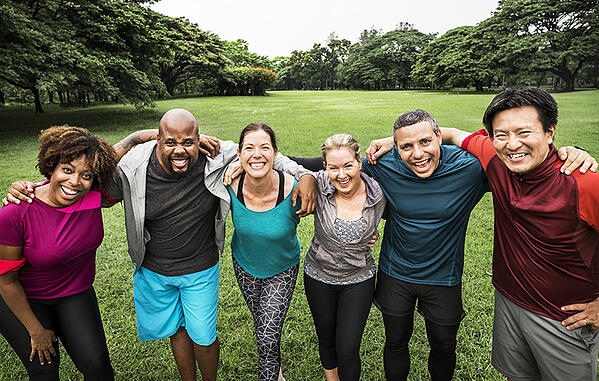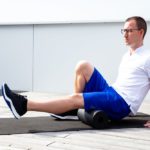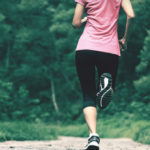Health professionals are the ones who lead in guiding and mentoring individuals to achieve their goals and improve their overall well-being.
Leaders in the industry, such as instructors and trainers, have an obligation to understand how issues of Range, Fairness and Inclusion affect those who work (online and offline) in health care areas. This will help to create a more welcoming environment.
What does inclusion, fairness and range mean?
Open entry to all types of people
Fairness: Holding and making the stage of the sphere honest
Inclusion: ensuring that all people are included and their unique variations are valued
Why Pay attention to range, fairness and inclusion in health?
Certain social factors are important in determining health, such as poverty, upbringing of children, food safety, ill-health conditions, and accessibility.
- The social issues such as racism are a heavy burden on many people in this country, leading to persistent physical and mental illness.
In the health and wellness sector, biases that exclude groups of people can create feelings of exclusion.
It is important to first eliminate biases. All people have subconscious and conscious tendencies and opinions which influence their decisions. Biases can be merely preferences or opinions that we may have about various groups of people we are more like or are more dissimilar to. Our collective team of healthcare professionals must understand the process of biases and then adjust our thinking accordingly in order to remain inclusive.
Range: A wide range of people.
To improve your variety as a healthcare professional, you should first try to increase the size of your immediate circle of influence and then expand it:
Select additional options:
Learn from those who are completely different to you, so that your circle is wide.
As a result, your empathy and ideas ranges will change.
You will defend your group and rise up to protect those who are a member.
Equalizing the playing area.
We as a society must now examine how equitable we are to understand how imbalances can impact those in the health sector. It’s possible that if all individuals aren’t able to entry a hospital due to price, this could have an impact on why there may be greater health risks and issues in the neighborhood where they reside? We aim to maintain profitable services to earn a living while being creative with options for those we intend to serve.
Two ways to achieve this are to adjust pricing to allow flexibility and to reach out to communities we would not otherwise serve. Health professionals can now find new ways to make their work more equitable by offering courses that are only available for donation, workshops with the option of donating, or scholarships.
Inclusion: Creating a sense of belonging.
By overcoming our biases, we can move away from the “norms” that society and society have imposed on us in order to classify people or groups of people. The differences in us make us unique and give us a way to learn about one another instead of judging or deriding them.
How can we create an environment that encourages belonging? All people will be welcomed, no matter their size, color, or shape. We will change the focus of health and wellness centers to be less about achieving milestones or achieving performative goals and more about community unity and wholeness. We will take the time to understand others and empathize.
Find out more about Range in Health by reading this article.
DEI: Give Attention to Being a Good Leader in the Health Trade
Overall, understanding the impact one has as a leader in health and how to diversify circles of influence is the first step to becoming more diverse as a professional. Diversity leads to mutual understanding and empathy. In order to make places more inclusive and equitable we must now understand how empathy allows us to put ourselves in the shoes of clients and students that we want to positively impact their lives.
Assets:
- Banaji, M. R., & Greenwald, A. G. (2013). Blindspot: Hidden biases in fine individuals. New York: Delacorte Press.
- Fontana F. Bopes J. Bendixen S. Pace T. George M. Mack M. (2018 Could 01). Discrimination Towards Overweight Train Customers: An Experimental Study of Private Trainers. Retrieved from https://www.ncbi.nlm.nih.gov/pmc/articles/PMC5955305/
- Human Genome (Human Genome Initiative) (2013). Encyclopedia of Neuroscience, 1873-1873. doi:10.1007/978-3-540-29678-2_2265
- Nyborg, H. (2019). Race as a social assembly. Psych, 1(1), 139-165. doi:10.3390/psych1010011
- Chou, V. (17 April 2017). How Science and Genetics Are Reshaping Race Debate in the 21st Century. Retrieved September 2, 2020, from http://sitn.hms.harvard.edu/flash/2017/science-genetics-reshaping-race-debate-Twenty first-century/
- Taylor, J. Jamila Taylor Director for Well-being Care Reform, Senior Fellow. Taylor, J. Director for Well-being Care Reform, Senior Fellow. Kaverman — B. By Andrew Stettner & Michele Evermore. . . Kahlenberg, — B. (2020, May 07). (2020, May 07). Retrieved from https://tcf.org/content material/report/racism-inequality-health-care-african-americans/?session=1
- Cardinal, B. J., Whitney, A. R., Narimatsu, M., Hubert, N., & Souza, B. J. (2014). Weight problems Bias in the Fitness Center: A Problem that is not well-known for its social justice, range, and inclusivity. Journal of Bodily Training, Recreation & Dance, 85(6), 3-6. doi:10.1080/07303084.2014.927668
- Fontana F. Bopes J. Bendixen S. Pace T. George M. Mack M. (2018 Could 01). Discrimination Towards Overweight Train Customers: An Experimental Study of Private Trainers. Retrieved from https://www.ncbi.nlm.nih.gov/pmc/articles/PMC5955305/










